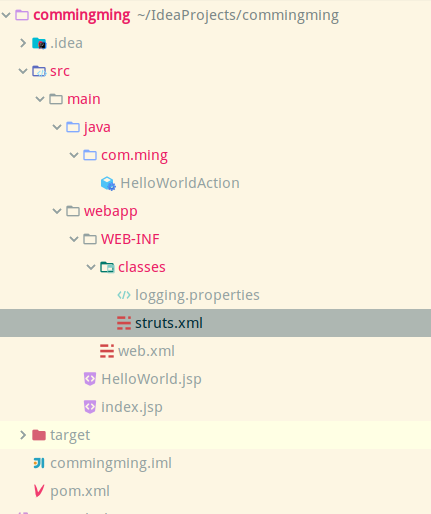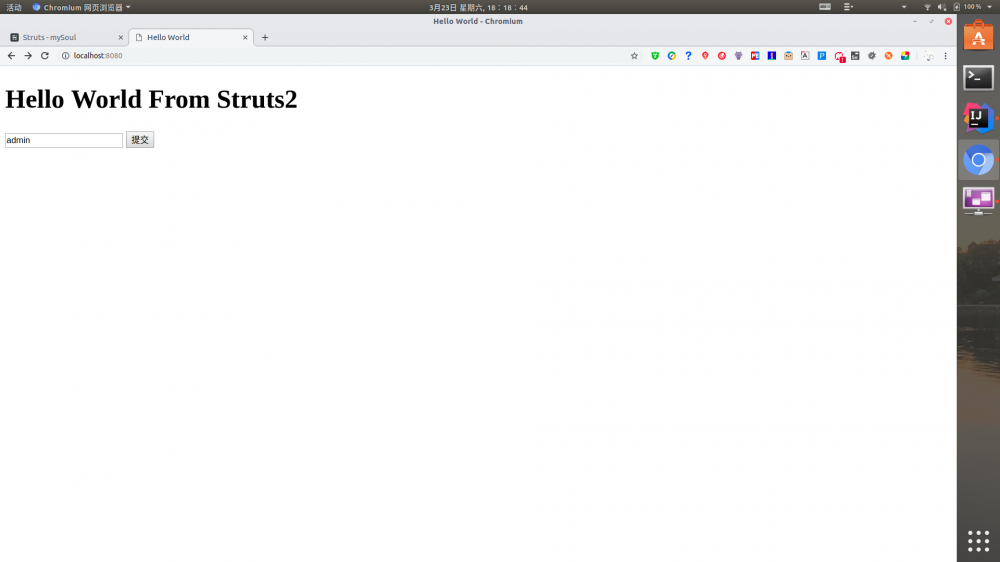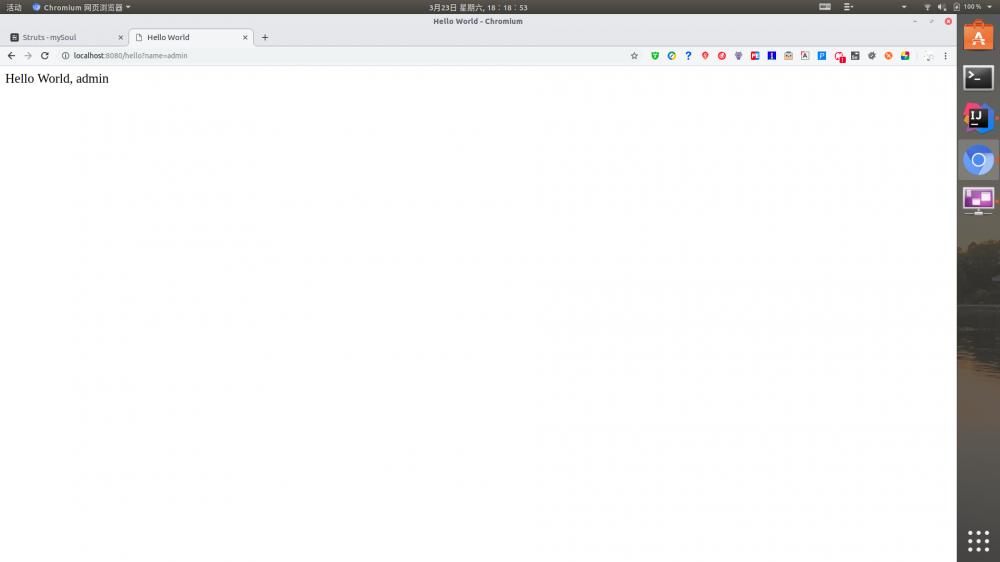Struts
运行流程
客户端浏览器通过HTTP请求,访问控制器,然后控制器读取配置文件,然后执行服务器端跳转,执行相应的业务逻辑,然后,在调用模型层,取得的结果展示给jsp页面,最后返回给客户端浏览器
| 组成部分 | struts |
|---|---|
| 视图 | 标签库 |
| 控制器 | action |
| 模型层 | ActionFrom JavaBean |
struts
maven 安装
官网 : https://struts.apache.org/
- idea新建web项目
- 接着如下依赖 网址 https://search.maven.org/artifact/struts/struts/1.2.9/jar
<dependencies>
<dependency>
<groupId>org.apache.struts</groupId>
<artifactId>struts2-core</artifactId>
<version>2.5.20</version>
</dependency>
<dependency>
<groupId>commons-logging</groupId>
<artifactId>commons-logging</artifactId>
<version>1.2</version>
</dependency>
<dependency>
<groupId>junit</groupId>
<artifactId>junit</artifactId>
<version>4.11</version>
<scope>test</scope>
</dependency>
</dependencies>
此时将会自动处理好依赖
一直采用的是直接打包好war包的方式的
编写配置文件
<!DOCTYPE web-app PUBLIC
"-//Sun Microsystems, Inc.//DTD Web Application 2.3//EN"
"http://java.sun.com/dtd/web-app_2_3.dtd" >
<web-app>
<display-name>Archetype Created Web Application</display-name>
<filter>
<filter-name>struts2</filter-name>
<filter-class>
org.apache.struts2.dispatcher.filter.StrutsPrepareAndExecuteFilter
</filter-class>
</filter>
<filter-mapping>
<filter-name>struts2</filter-name>
<url-pattern>/*</url-pattern>
</filter-mapping>
</web-app>
创建拦截器,拦截所有请求.交给struts控制器执行
编写struts控制文件
<?xml version="1.0" encoding="UTF-8"?>
<!DOCTYPE struts PUBLIC
"-//Apache Software Foundation//DTD Struts Configuration 2.5//EN"
"http://struts.apache.org/dtds/struts-2.5.dtd">
<struts>
</struts>
此时
此时项目目录结构如下

创建action类,控制器类
创建控制器类,完成页面的信息的传递
package com.ming;
public class HelloWorldAction {
private String name;
public String execute() throws Exception {
return "success";
}
public String getName() {
return name;
}
public void setName(String name) {
this.name = name;
}
}
此时,定义私有String类型的name,定义set,get方法,当执行的时候,调用execute方法.
此为控制器,起到连接两者的视图层,和模型层之间的关系.
创建视图层
定义页面提交视图层
<%@ page language="java" contentType="text/html; charset=ISO-8859-1"
pageEncoding="ISO-8859-1"%>
<%@ taglib prefix="s" uri="/struts-tags"%>
<!DOCTYPE html PUBLIC "-//W3C//DTD HTML 4.01 Transitional//EN"
"http://www.w3.org/TR/html4/loose.dtd">
<html>
<head>
<title>Hello World</title>
</head>
<body>
<h1>Hello World From Struts2</h1>
<form action="hello">
<input type="text" name="name"/>
<input type="submit" value="提交"/>
</form>
</body>
</html>
此时,定义表单.提交内容,将会发送到hello控制里
定义数据接收层
<%@ page contentType="text/html; charset=UTF-8" %>
<%@ taglib prefix="s" uri="/struts-tags" %>
<html>
<head>
<title>Hello World</title>
</head>
<body>
Hello World, <s:property value="name"/>
</body>
</html>
再次编写配置文件
再次编写配置文件,两者联合起来
<?xml version="1.0" encoding="UTF-8"?>
<!DOCTYPE struts PUBLIC
"-//Apache Software Foundation//DTD Struts Configuration 2.5//EN"
"http://struts.apache.org/dtds/struts-2.5.dtd">
<struts>
<!-- 定义调试 -->
<constant name="struts.devMode" value="true" />
<!-- 定义数据包 -->
<package name="helloworld" extends="struts-default">
<!-- 定义处理逻辑 name为指定处理的名称 class 处理的包文件 method 处理将会调用的方法-->
<action name="hello"
class="com.ming.HelloWorldAction"
method="execute">
<!-- 成功返回页面 -->
<result name="success">/HelloWorld.jsp</result>
</action>
</package>
</struts>
运行效果


最后
目前 jsp已经基本废弃 所以标签库已经基本没人用了.
struts起的作用,更多的是控制器的作用,请求送给spring
正文到此结束
热门推荐
相关文章
Loading...











![[HBLOG]公众号](https://www.liuhaihua.cn/img/qrcode_gzh.jpg)

